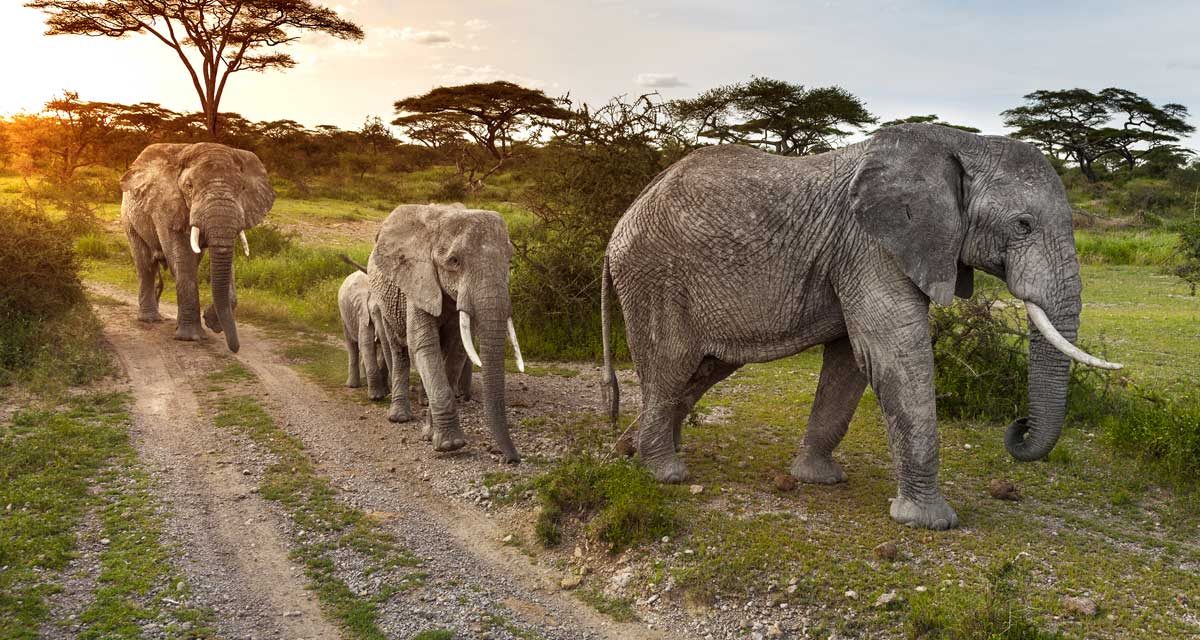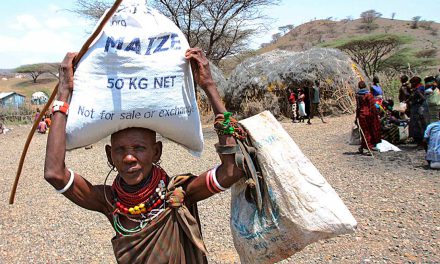Five iconic elephant bulls have been slaughtered by trophy hunters in Tanzania in the last eight months, at least two of which were “super-tuskers”. An unofficial agreement between Kenya and Tanzania had protected these elephants for 30 years. A new Avaaz petition rightly calls on the Tanzanian government to end the madness. The Amboseli elephants have been studied extensively for nearly five decades now. Much of what we know about elephants is literally thanks to this set of remarkable elephant families.
The 30-year reprieve (and the fact that Kenya long ago banned trophy hunting) allowed the Amboseli population to thrive and produce some of the world’s most magnificent bull elephants despite the general population decimation trends across the continent. These trends only slowed after the US and China imposed domestic ivory trade bans in 2015 and 2017 respectively.
“Shooting an Amboseli bull is about as sporting as shooting your neighbour’s poodle” –Cynthia Moss, Amboseli elephant expert (cited in Africa Geographic).
It is unconscionably cruel to shoot highly habituated elephants for ‘sport’. As Cynthia Moss, one of the leading Amboseli scientists, rightly points out, it is hardly ‘fair chase’ or ‘ethical’ to shoot an Amboseli bull with a high-calibre rifle. Given how few big tuskers are left in the world (some estimates suggest less than 50), the agreement to leave the Amboseli population alone couldn’t be more important, not only for genetic heritage but for the sake of any future hope of human-elephant coexistence. Elephants are increasingly being born with smaller (or no) tusks in response to the rapacious history of poaching and trophy hunting for ivory over the last two hundred years. Tuskless elephants have lost their essential ‘elephantness’.
In response to the recent killing, some of the world’s foremost elephant scientists penned a letter to Science, a leading academic journal, calling for authorities to end the trophy hunting of big-tusked elephants in northern Tanzania. Joyce Poole, Cynthia Moss and their co-authors, many of whom have studied the Amboseli elephants for over forty years, noted that the dead elephants were part of “one of the last gene pools for enormous ivory and the source of the largest tusks ever collected… Alive, these “super-tuskers” have great biological, economic, and social value; once they are shot, their contribution ends.” That is essentially the end of the argument. Hunting big tuskers for trophies is a fundamentally unsustainable, self-defeating activity.
The letter was followed by a petition to the Secretary of Interior and the US Fish and Wildlife Service (USFWS) to ban imports of the trophies from the hunts into the US. Earlier this year, the Pro-Elephant Network also reiterated its call to the USFWS to halt the import of elephant hunting trophies into the US.
Shortly prior to that, Simon Espley of Africa Geographic (AG) wrote a second letter to Michel Mantheakis, the chair of the Tanzanian Hunting Operators Association, asking for information about these hunts after Mantheakis had attacked an AG report on the hunts. Espley pointedly noted: “Our request to you was for the specifics related to these hunts. Yet, your public response after our report was a generic ideological sermon, complete with unsubstantiated claims and cheap shots aimed at Africa Geographic…” and “…if an activity further reduces the population of a species or genetic trait already in decline then that activity is, by definition, not sustainable.” Mantheakis is yet to respond.
Other scientists have castigated the Science letter. They explicitly posit that revenue from hunting benefits local community members and provides conservation revenue that would otherwise be absent. The assumption often does not bear up under scrutiny but still provides a useful fiction for defending trophy hunting. One defender opined that the Amboseli gene pool will not be affected by only five rare tuskers being shot; this without any evidence that it won’t, while calling for evidence that it will. Only one of the five tuskers has been identified – the hunters burned the carcasses – and he was only 35 years old, yet to reach his breeding peak, which begins at 40. I’m not a mathematician, but five of fifty gone is a damning 10 percent decimation in a short eight months.
It was, therefore, surprising to see the Director of WildCru at Oxford University call the letter “backward” and describe the call for a ban on trophy imports as “imperious”. On X, she asks: “Yes those old males breed, but where is the proven conservation impact of hunting five bulls from a relatively secure, generally growing population?” This appears to miss the point on purpose. It’s not about general population stability; it’s about the decimation of the world’s last big tuskers and the loss of their unique and irreplaceable genes which haven’t yet been passed on!
Just the two chapters on bull elephants in The Amboseli Elephants alone contain sufficient scientific information to fully warrant a ban on elephant trophy hunting. Professor Dickman confusingly charges that because the Science letter refers primarily to the scientific value of the super-tusker population, its authors somehow neglect the impact of elephants on human beings or think it unimportant. This is sheer ad hominem assertion without evidence, ignoring that the hunting community itself has largely been severely critical of the hunts.
The aggressive deflection, by one of the world’s leading conservation scientists, from the issue at hand – decimation of the world’s last super tuskers – is confusing. The constant refrain is that trophy hunting bans will increase human and elephant conflict. But this crude consequentialist reasoning is a strange rationalisation of an unjustifiable activity. Exactly how did local communities benefit from the slaughter of these five tuskers, especially given that their carcasses were burned?
Dr Katarzyna Nowak – one of the authors of the Science letter – pointed out to Professor Dickman on X that scientific research is clear that removing older bulls from male elephant societies may increase human and elephant conflict: “Older bulls may police aggression directed towards non-elephant targets or may lower elephants’ perception of their current threat level. Our results suggest male elephants may pose an enhanced threat to humans and livestock when adolescents are socially isolated, and when fewer older bulls are nearby.” In other words, removing older bulls through trophy hunting likely exacerbates human and elephant conflict. The idea that trophy hunting somehow increases local communities’ threshold tolerance for conflict with elephants is delusional.
Dickman’s plea is ostensibly for this debate to be about costs and benefits that hunting may bring to conservation. But the fact that the big tuskers’ carcasses in northern Tanzania were burned suggests that the hunts had very little do with conservation or community benefits.
Last year, Nikolaj Bichel and Adam Hart released a 377-page book called Trophy Hunting (recently reviewed here in Daily Maverick). While largely defending trophy hunting’s conservation potential, the authors recognise some of the moral contradictions entailed in the practice and admit that trophy hunting is often poorly governed. They cite Craig Packer, a conservation scientist based in Tanzania for many years:
“[T]here might only be four or five honest operators out of fifty-plus companies in Tanzania. Only a tiny minority was willing to take the longer view of conservation; the rest were fly-by-night operations that only cared about short-term profits. They had no incentive to ensure healthy populations in the distant future. If they overshot the lions in Tanzania, they could move operations down to Zambia or Zimbabwe the following year.” (p. 247)
This is further highlighted by Espley’s point to Mantheakis, which strongly contradicts Dickman’s insistence that without trophy hunting, conservation land would become degraded:
“Your industry abandoned 110 out of 154 Tanzanian hunting zones in which you had exclusive use – because they were no longer profitable for trophy hunting. That’s 140,000 km² of land – that could’ve benefitted conservation – lost. This land was utilised by the trophy hunting industry you hold in such high esteem – and then abandoned once depleted. This abandoned land no longer contains trophy animals and is being reduced to rack and ruin – playing host to poaching, mining, logging and other harmful activities. That you proudly trumpet the land still being hunted as an example of a “viable” and “well-regulated” industry and ignore the elephant in the room speaks volumes. This pro-hunting article highlights the reality facing the trophy hunting industry in Tanzania. And yet you claim that all is well in your industry …”
In light of what has just transpired in northern Tanzania, these points couldn’t be more salient. Incentive misalignment – between long-run sustainability and short-term profits – is baked in and epitomises the ultimate governance problem with trophy hunting in open, unfenced systems: The incentive to “over-harvest” is more powerful than government’s incentives to govern the practice, or (evidently) of the hunting community’s own instinct for self-preservation.
Why will Mantheakis not respond? Why are scientists like Amy Dickman so quick to dismiss the legitimate scientific concerns of the authors of the letter to Science? And why did Bichel and Hart fail to cite any of the Amboseli research(ers) in their book, or Connie Allen and others for that matter? We’re at risk of losing the world’s last super-tuskers and some of the world’s top scientists are loudly defending trophy hunting while ignoring biological reality.
Dr Ross Harvey is a natural resource economist and policy analyst, and he has been dealing with governance issues in various forms across this sector since 2007. He has a PhD in economics from the University of Cape Town, and his thesis research focused on the political economy of oil and institutional development in Angola and Nigeria. While completing his PhD, Ross worked as a senior researcher on extractive industries and wildlife governance at the South African Institute of International Affairs (SAIIA), and in May 2019 became an independent conservation consultant. Ross’s task at GGA is to establish a non-renewable natural resources project (extractive industries) to ensure that the industry becomes genuinely sustainable and contributes to Africa achieving the Sustainable Development Goals (SDGs). Ross was appointed Director of Research and Programmes at GGA in May 2020.













